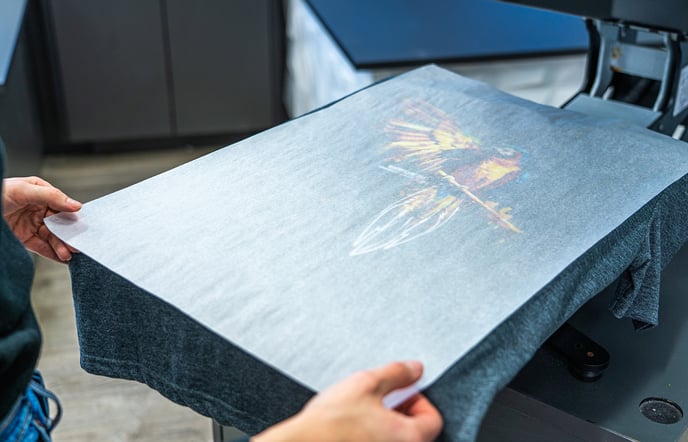The importance of using protective sheet paper during the curing process of dtg printing and its correct application guidelines.
DTG technology requires fixation of both pretreatment liquids and inks; hence the user must equip his workstation with the proper machinery. The most common curing equipment that is used for the curing process of the printed garments is a heat press, as it occupies limited space. The desired temperature can be achieved within minutes, a pressure feature and a hover option are available and generally the fixation times are much shorter, when compared with a dryer.
During the curing process, either it is for the pretreatment or the design itself, portions of wet pretreatment solution or ink from the print will stick to the heat presses’ surface and when pressing garment after garment, this residue will start to build up and may accidentally be applied on the next garment, causing stains or discoloration.

In order to keep your heat press clean and at the same time your printed designs quality high, it is important to use a protective sheet paper on top of the fabric’s surface prior to pressing, so that the sprayed or printed area won’t come in direct contact with the hot surface. We suggest using disposable parchment sheet paper instead of other thicker sheets (i.e. kraft, Teflon, silicon etc), as this type gives the best uniformity in drying and enables better evaporation of volatiles. These sheets should be disposed after being used a few times, in order to avoid pile up of residue and eliminate the risk of transferring it onto the next (about-to-be-cured) fabric. Also, by replacing the sheets regularly, wrinkles which are created from humidity and result in uneven printing surfaces, are eliminated.
The correct way you should use a protective parchment sheet paper is to lay it carefully on top of the pretreated or printed garment, in a way that covers effectively the area that needs to be cured. Be careful not to move it around after placement, as the ink, still wet, may accidentally transfer and smear on the fabric. After the fixation is complete, remove the sheet and repeat the process, until the sheet starts to yellow or get wrinkly. Then discard it and continue your curing process with a brand new one.
Tip: If your parchment sheet exceeds the platen's size, then you can fold its edges in order to prevent it from moving or rolling, due to humidity.
-1.png?height=120&name=Polyprint%20Logo%20(Dark)-1.png)